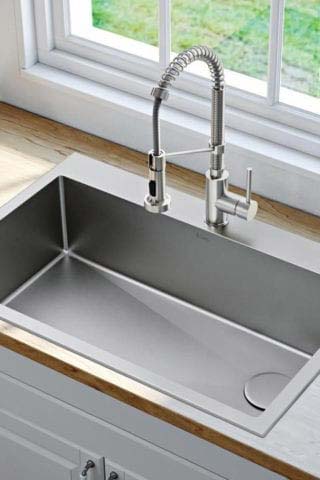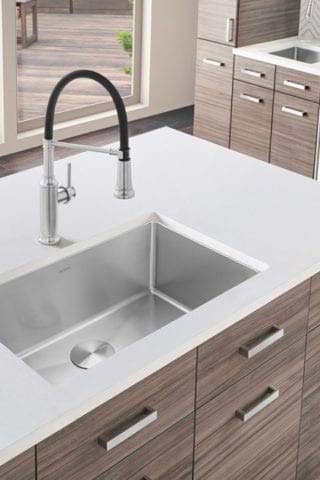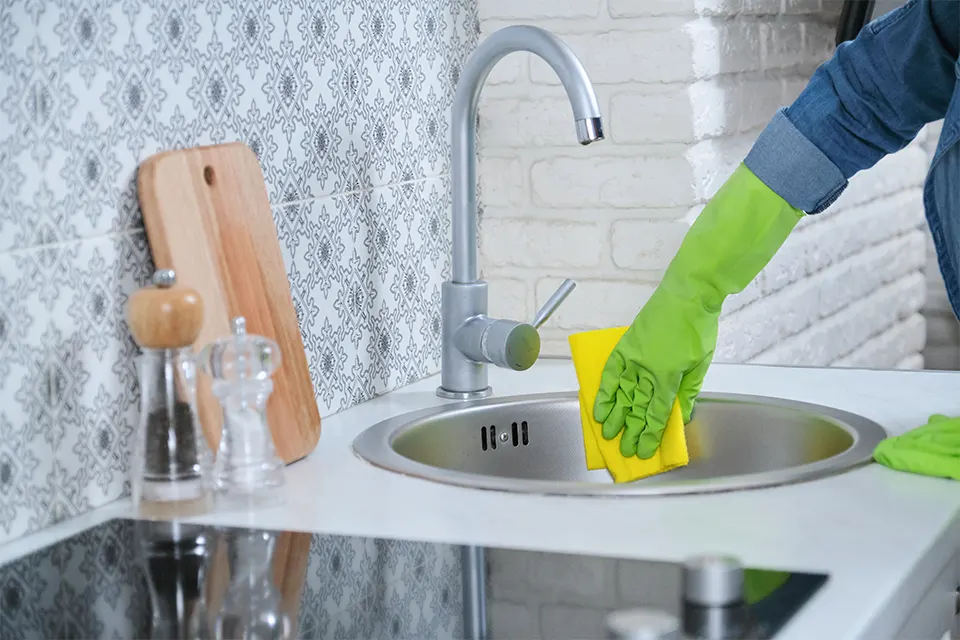Stainless steel, a popular finish for kitchen appliances such as refrigerators and dishwashers, works well for sinks, too. It is durable and won’t stain, but it needs some extra care to maintain its appearance. Here are some tips to maintain a stainless-steel sink that’s spotless as well.

Its brushed finish is beautiful, but Stainless Steel is susceptible to all kinds of fingerprints and smudges. Fortunately, you can wipe off the everyday marks from a sink even if they’ve accumulated over time.
Food residues and mineral deposits from “hard” water can be easily removed.
Choosing a Backsplash Design
Quick Cleaning of Everyday Marks on Stainless Steel
Materials:
- Microfiber or other lint-free, soft cloth
- Tap water
Steps: Simply use tap water and a microfiber cloth to gently wipe away fingerprints and smudges, rubbing in the direction of the grain for optimal luster.
Tips and Steps for Cleaning a Stainless-Steel Sink
Do not use bleach on your stainless-steel surfaces, and always check product labels to ensure that cleaning agents are safe to use on stainless. Avoid abrasives like scouring powder and steel wool, since they can scratch and mar the finish permanently. Instead, choose cleaners specifically designed for use on stainless steel, or start with the gentlest cleansers you have, and use a bit more elbow grease to clean the surface thoroughly.

Materials:
- Stainless-steel cleaner (wipes or solution)
OR - Dish soap
- Microfiber or other lint-free, soft cloth
Steps:
- Apply stainless-steel cleaner to a cloth or spray it directly onto the sink. Or use a mixture of one teaspoon dish soap in one quart of hot tap water.
- Use the cloth (or wipe) to gently clean the sink, going in the direction of the grain, again for maximum shine.
- Use warm water to rinse away residual soap. Use a clean cloth to dry the sink and edges.
How to Clean Hard Stains on Your Stainless-Steel Sink
Hard water stains might look like white residue or dry drops of liquid on your sink’s surface. Hard water is caused by high mineral content in the groundwater that leaves deposits on surfaces.
Minerals might build up in a white crust on your faucet screens and can even reduce the effectiveness of your soap and detergents.
If you’ve got a real mess, with significant hard water spots or stuck-on food, you can try a few extra tricks to clean your stainless-steel sink.
Materials:
- Baking soda
- White vinegar
- Spray bottle
- Sponge or microfiber cloth
- Soft toothbrush (optional)
- Rubber gloves (optional)
Steps:
- Rinse the sink with water and allow it to remain wet. If desired, put rubber gloves on to protect your hands.
- Apply a coating of baking soda to the sink’s surface.
- Use a sponge or cloth to rub the baking soda onto the surface, working in the direction of the grain. Use a soft toothbrush to remove buildup from the tiny areas on and around the faucet.
- Spritz vinegar onto the baking soda and use a sponge or cloth to gently scrub in the direction of the grain once more. The mixture will create a light foam (and a fizzing sound to go with it).
- Rinse the sink with water and dry it with a clean cloth.
One last step for a great-looking stainless-steel sink:
Use a cloth with a few drops of mineral, olive, or baby oil to lightly buff your sink and get a final polish on it.


